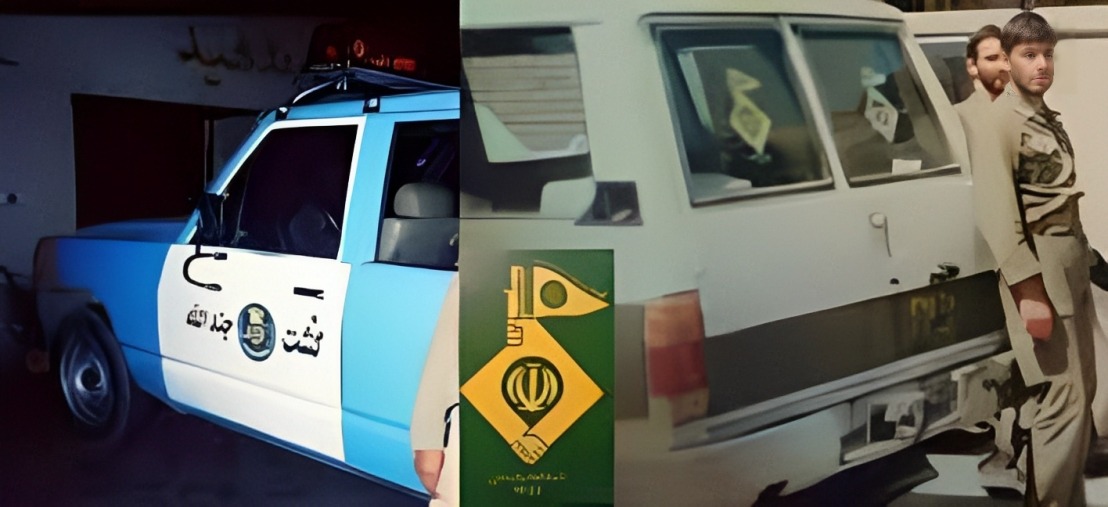When we look at the images from the popular struggles before Bahman ’57 (February 1979), we witness many women who were not obliged to wear the hijab, appearing in these images, and playing an essential role in the revolutionary struggles. The issue of the hijab was one of the major challenges for the regime from the beginning of the revolution.
The mandatory wearing of the hijab in Iran began with Ayatollah Khomeini’s speech on 15 Esfand ’57 (March 6, 1979). He protested the presence of women without hijab in ministries and demanded the presence of women in Islamic hijab.
However, this statement by Ayatollah Khomeini was met with widespread protests from secular women and those opposed to the hijab; the arbitrary forces and committees in the early days of the revolution began to suppress and clash with the protesters. The intensity of these confrontations and tensions increased to such an extent that Ayatollah Khomeini’s office was forced to issue a statement on 17 Esfand (March 8, 1979): This statement forbade any confrontation with women without hijab and only obliged the security forces and committees to deal with them
The mandatory hijab was seriously enforced in all departments, organizations, and schools from 14 Tir ’59 (July 5, 1980), and women without hijab were banned from entering these places. This trend continued until Ramadan of ’60 (1981), and new rules for the hijab were defined in the same year.
It can be said that the clashes of the Guidance Patrols, now under another name, existed from the beginning of the revolution and throughout all periods of the government, suppressing and clashing with women over the issue of the hijab.
Although being without a hijab was banned in all public, government, and private centers, the Islamic Penal Code was adopted in ’62 (1983), and according to it, “women who appear in public without an Islamic hijab will be sentenced to 74 lashes as discretionary punishment.”
The committee’s approach and Islamic penal laws do not end here; in ’62 (1983), a new debate under the title of “improper veiling” was raised, and committees such as “Jondallah” and “Forces Fighting Vice” were formed during this period to deal with “improper veiling.” These committees committed many atrocities during those years, such as “inserting needles into women’s foreheads.”
Mousavi Tabrizi, the Attorney General of the Revolution in the early years, spoke in Ordibehesht ’97 (April/May 2018) about the Guidance Patrols’ treatment of women: “The Guidance Patrols have not been successful, and the situation of the hijab was even better in religious families than now.” (1)
The confrontations of the Guidance Patrols and committees significantly decreased with the coming of the Reformist government and the opening of cultural space and were not as noticeable as in the past. Until, in the last months of the Reformist government in ’84 (2005), a plan for expanding hijab and chastity, which had been on the agenda of the Supreme Council of the Cultural Revolution since the beginning of the ’70s (1990s), was approved. Strategies and executive solutions for each of the agencies were specified in it, but this resolution was not implemented. (2) Until in ’85 (2006), the revised plan for organizing fashion and dress was approved by the Parliament and the Guardian Council. This plan was considered a fundamental scheme in the fight against improper veiling, and the responsibilities of government agencies were specified in it.
In the same year, religious authorities like Golpaygani, Fazel, and Makarem expressed concern about the government officials’ neglect of cultural matters, especially the hijab. This led to the resumption of the Guidance Patrols in ’86 (2007) under the title of the “Enhancement of Social Security” project. Organizations and departments allocated budgets of several tens of billions (of Iranian Rials) to promote chastity and the hijab.
With the resumption of the Guidance Patrols’ activities and the then government and regime’s support for them, more severe confrontations with women took place. Tehran’s then police chief in ’87 (2008) likened women without proper hijab to “mobile mannequins.” These confrontations sometimes led to clashes between security forces and women. At the same time, videos of these conflicts were widely circulated, drawing extensive criticism towards the police force.
As the ’88 (2009) election atmosphere approached, “Enhancement of Social Security” and confrontations with improperly veiled women were temporarily set aside due to electoral conditions. However, in ’89 (2010), the return of the “Guidance Patrols” under the title “Monitors” was raised, and they resumed their activities. (3)
The clashes between the Guidance Patrols and the police force with women increased again in ’90 (2011), but this plan was not limited to the streets. In ’91 (2012), the Guidance Patrols were present at concerts and shopping centers to confront improperly veiled women. Once again, with the approach of the presidential election atmosphere in ’92 (2013), the activities of these patrols were reduced.
After the ’92 (2013) presidential elections, the presence of Guidance Patrols briefly faded until Sajedinia, Tehran’s police chief, announced the presence of seven thousand undercover forces to promote the Enhancement of Social Security in ’95 (2016). Part of these invisible forces’ duties included dealing with improper veiling, uncovering hijab in vehicles, but this plan faced widespread opposition. In the same year, the Parliament Research Center released a report and deemed the invisible patrols unsuccessful, causing duplicity and hypocrisy in society. The primary reason for this failure was identified as the lack of public demand and desire.
In recent years, images of the Guidance Patrols’ confrontations with women have been widely disseminated on social networks, prompting reactions from government officials and parliament members. Fatemeh Saeidi, a reformist member of parliament, wrote on Twitter in ’96 (2017): “I wish instead of Guidance Patrols, we had patrols against lies. We’ve ignored lies and corruption, becoming obsessed with a few strands of our daughters’ hair.”
For nearly 40 years, the Islamic Republic has sought to combat improper veiling by forming committees and patrols like (Jundallah, Ansar, and Guidance) and Islamic propaganda organizations. It has attempted to suppress women’s desire for optional hijab, spending hundreds of billions of Tomans and suppressing and imprisoning women activists. Despite these efforts, it has never been able to halt these protests and has consistently faced failure throughout these years. The persistent tension between enforcement and social resistance illustrates the complexity of the hijab issue in Iran, reflecting deep-rooted social, cultural, and political divisions.
Ansari, Ehsan, “Guidance Patrols Create Dissatisfaction; Interview with Hossein Mousavi Tabrizi,” Arman Emrooz, April 28, 2018.
“A Review of the History of Guidance Patrols,” ISNA, April 20, 2016.
“The Closure of the Social Security Plan is Election Propaganda,” Jomhuri-ye Eslami Online, April 13, 2009.









